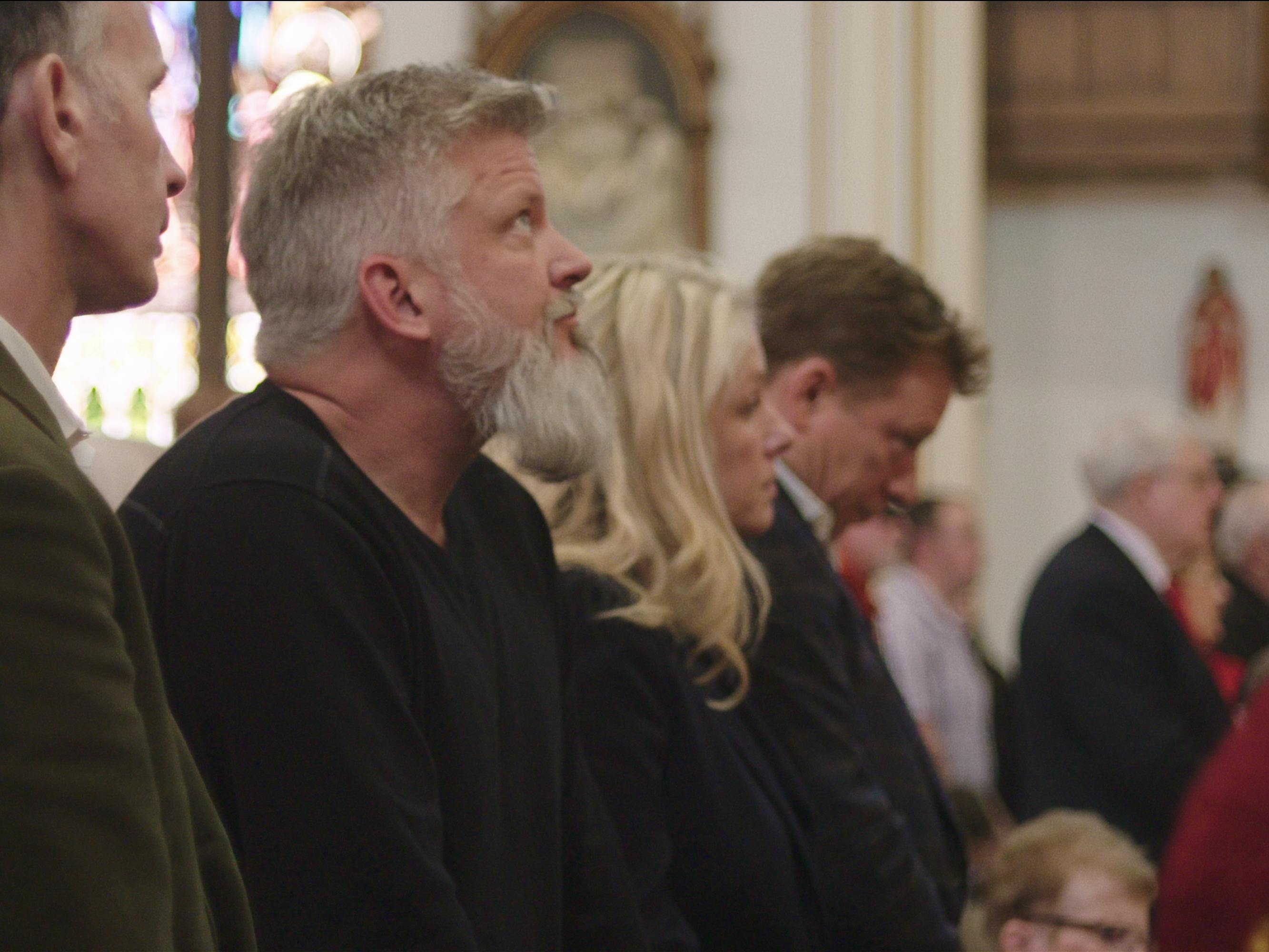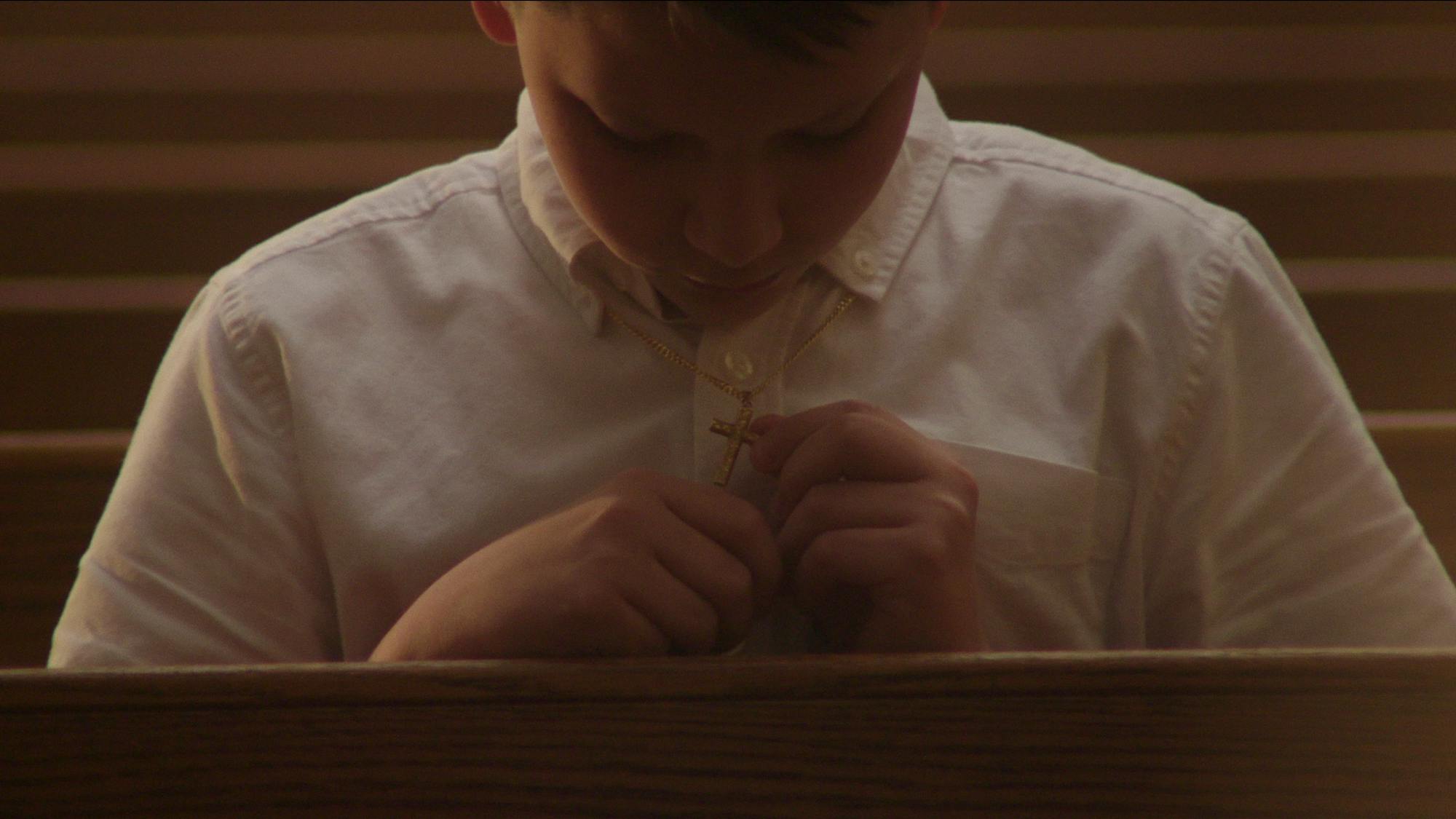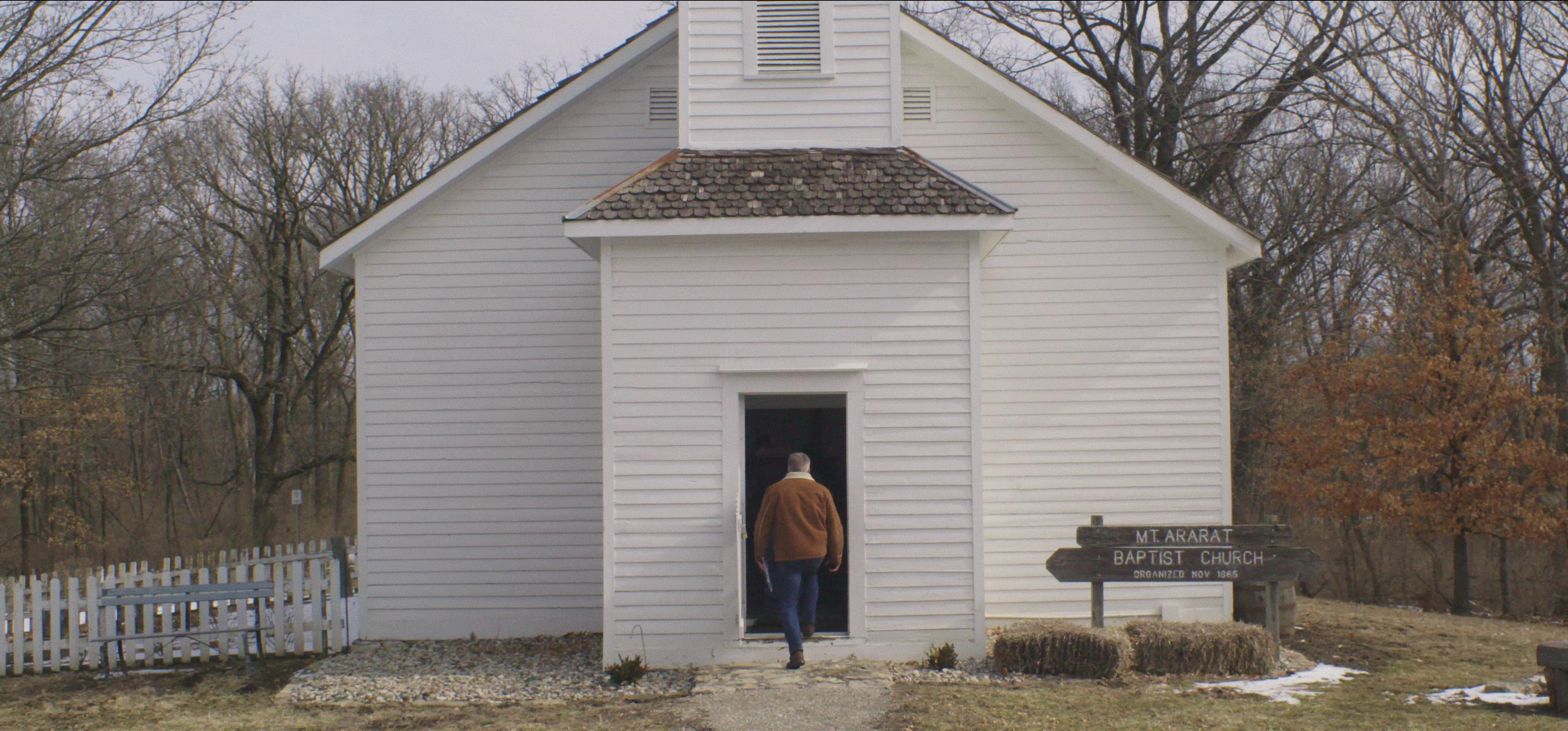Robert Greene discusses his new movie with Oscar-nominated filmmaker Steve James.
Filmmaker Robert Greene has blurred lines of reality and fiction before: His 2016 feature, Kate Plays Christine, observes an actress preparing to play Christine Chubbuck, the reporter who died by suicide while on the air; 2018’s Bisbee ’17 follows the residents of an Arizona town as they recreate a mass deportation that occured 100 years earlier; and 2014’s Actress documents a woman performing her own story of motherhood and stardom.
With his latest film, Procession, Greene takes his unique approach to storytelling one step further by ceding directorial control to the participants. Ed Gavagan, Joe Eldred, Mike Foreman, Dan Laurine, Michael Sandridge, and Tom Viviano, six survivors of abuse at the hands of Catholic priests, most of whom both write and direct scenes to process, heal, and transform their trauma. Although their stories and subsequent episodes are unique, the men stage scenes within their spaces of trauma, subverting religious rituals, language, sounds, and imagery.
By relinquishing his authority and making the process as collaborative as possible, Greene creates a safe space for the men to make peace with the most painful episodes from their lives: “Every moment needed to be like, ‘I don’t know the answer either. What do you want to do? We can decide together,’” Greene says. “What you see onscreen is the tip of an iceberg of how the collaborative act of filmmaking is driven by love and understanding and can really help.”
Steve James, two-time Oscar nominee and director-producer of Hoop Dreams, among other award-winning documentaries, proved a perfect partner to discuss the challenges of immersive documentary filmmaking and the radical change it can produce. Here the two men discuss Procession, and the relationships among healing, art, camera, and truth.

Michael Sandridge, Dan Laurine and Ed Gavagan
Steve James: Procession is one of the deepest, most resonant docs — well, films — I’ve seen in a long time. I’m really interested in your decision to open the film with [the staged church reenactment]. When I first saw it, it went through my mind, I don’t know if I’m going to like this film. I’m not sure what he’s up to here, and he may have gone off the ledge, honestly. Especially after that press conference — which is very real and heartfelt. Did you think about the audience’s reaction at that point?
Robert Greene: I completely thought about the audience. I remember you saying later that you actually thought that feeling of uneasiness was productive. That was what I dreamt of. I’ll go back to a previous film I made: Actress. One of the best compliments I ever got for that film was from this nice woman at Hot Docs in Toronto. She said, “The first scene, it’s all staged and [Brandy, from Actress]’s back is to us, and she’s clearly acting. I just thought, I don’t trust this movie. I held onto that lack of trust the entire time. And then, by the end, I was thinking about my relationship to trust and images in a very direct way.”
There’s something about that reaction I am really attracted to. In this case, it’s not trust, it’s: What the hell is this? In a way, the opening press conference is another level of staged: Literally five minutes later, you hear Ed say, “I don’t want to cut to the weepy dude in the corner.” What the staged church scene does is it makes you think about our motivations. It makes you think about the risk. It hopefully makes you question what you’re watching in a productive way. In documentary films, we’re so often afraid to let the audience ask questions because these are real peoples’ lives. Our instincts are to move toward simplicity, directness, reverence, idealism, and things that we think are positive. But I think an audience also wants to be asking questions and to have mystery.
You think we’re supposed to be in our little boxes as survivors and collaborators, but we’re not. We’re going to blow it up, and we’re going to make noise.
Robert Greene
SJ: Part of the unease is a sense that suddenly you’ve taken these real guys’ lives and turned them into some kind of wild and crazy horror film. What becomes clear right away is that this was a hugely collaborative undertaking and that what we are actually watching is you giving up your authority.
RG: It’s almost like that opening scene is a giant dramatization of what the audience might think is the hierarchy of the director dominating. That anxiety about who is telling the story and what they’re going to do with it takes you into that meeting in a very productive, exciting way. You don’t have to hear me give my pitch in that meeting — I don’t have to become an onscreen character.
There was a version of this film that a friend of mine watched and was like, “Every five minutes, I’m hearing how safe or how concerned everybody is.” There’s also a version where it’s like, “This is the most dangerous, exploitative thing I’ve ever seen” — it doesn’t honor the safety checks that we put in there. And there’s a version where every five minutes we’re patting ourselves on the back for how positive the experience was. The guys would say, “If you try to put some kumbaya shit at the end of this movie, we’re going to revolt.” At the same time they would say, “You got to make sure you’re honoring how important it was that Joe’s nightmares were gone.” This is how trauma works: progression and then backtracking — five steps forward, seven steps back. That’s how healing happens, and that’s the only way it happens. It was such a tricky balance to try to make sure it wasn’t too safe, but it wasn’t too risky.
SJ: The subjects have real agency in the film as well as in the healing process. They have been unable to be emotionally engaged in many ways, some more than others. And yet they are there for each other in this profound way in the film that comes as a result of this process.

Terrick Trobough
RG: There is no fixing what happened to them, and that is very, very important to say. The path of healing is continuous today; it’ll be continuous for the rest of their lives. One of the things that Rebecca Randles — the lawyer who cast the film — told me earlier is, “Retraumatization comes from taking power away. You absolutely have to never take their power away.” No matter how good of intentions you have, that’s incredibly difficult to do when making a film, especially as the director and editor. There was so much buy-in and so much questioning from everyone throughout the process, with those guys always leading the way. It’s about building something, and it’s about a deeper level of communication, and making connections with people.
SJ: There are large passages where music completely disappears — it’s a very quiet film in a lot of ways. Then there are times when it is very present. What governed your creative decisions about how to weave the music into the film?
RG: Music oftentimes is laid in initially because I’m worried you’re not feeling things. Then, as the film gets better and closer to a finished version, we start stripping it away. Dan said this thing one time to Ed: “It’s like a refrigerator hum in the back of your mind all the time.” The music is obviously more beautiful than that sound, but it brings a searingness that floats through moments. In a pacing sense, I want you to feel the transition from one moment to another. Then in the [staged] scenes, the music is maximalist because it is not about subtlety, it’s about genre.
SJ: When it’s working at its best, the experience of making a documentary is this incredible experience for the people in the film as well as the people behind the camera, even when it’s really serious. They got to connect with each other and with you guys. They got to be part of this endeavor.
RG: It can be exhausting making movies, but it’s also fun, and it can be joyous. We embraced the subversive aspect of walking into a church, having survivors dress up as abusers, and really mess with your head as a viewer. To me, a scary moment like that white room [Ed’s dreamlike set for his scene], there is joy to me in watching an entire audience be on the edge of their seat, and then Ed gets to yell, “Cut,” and just take all that power away, and say, “I was in control the whole time.” We’re going there because you think we’re supposed to be in our little boxes as survivors and collaborators, but we’re not. We’re going to blow it up, and we’re going to make noise.
